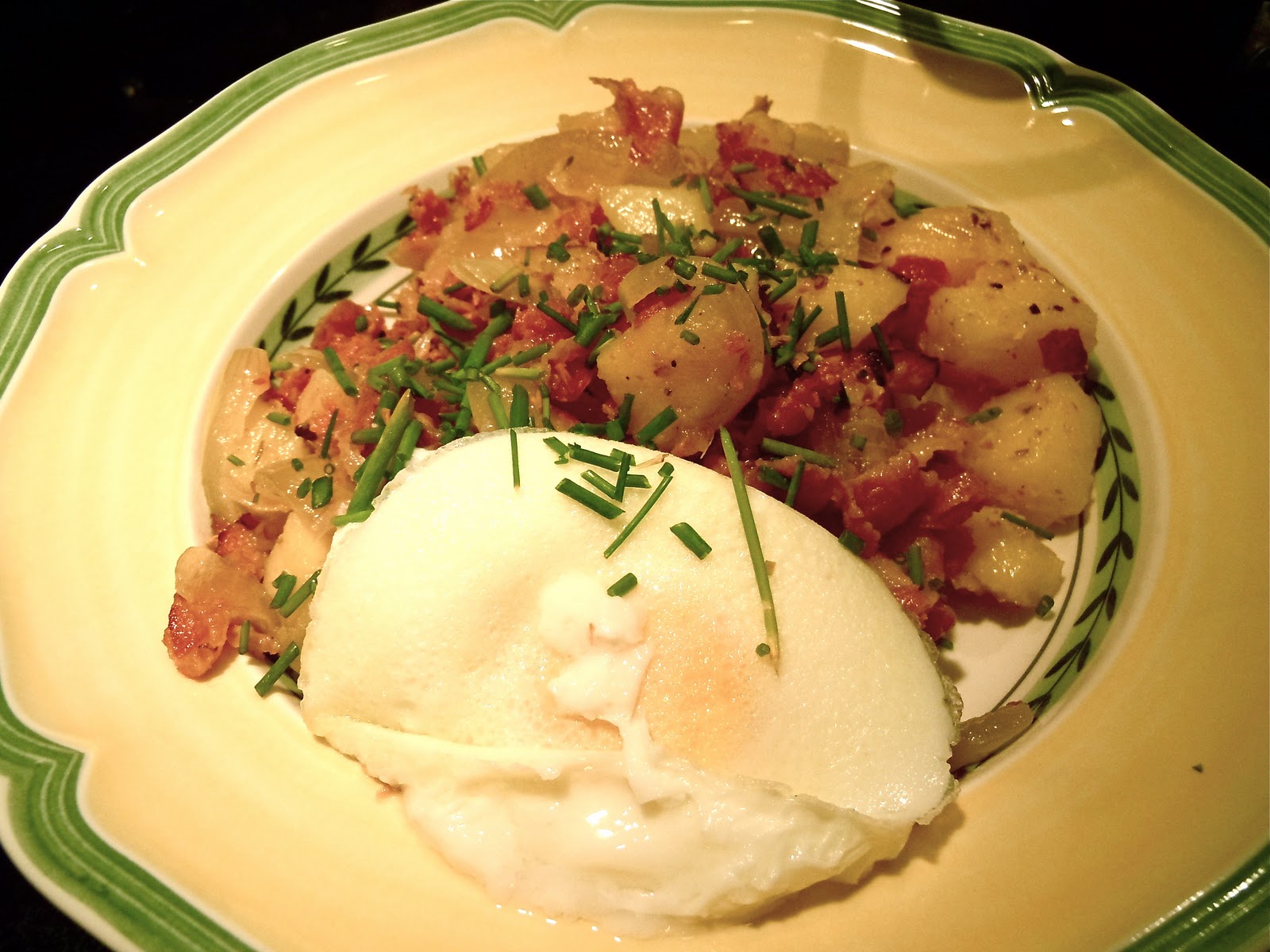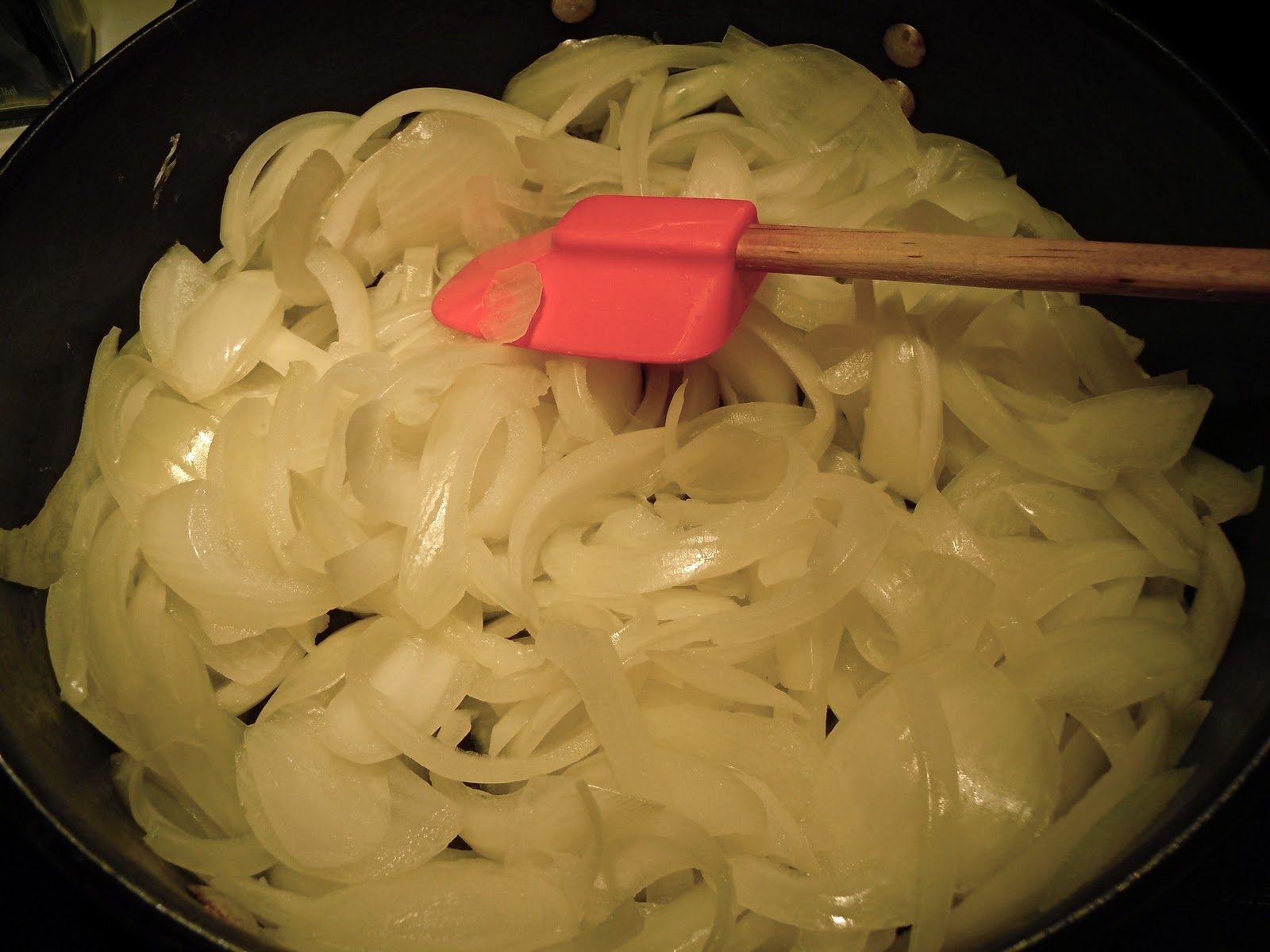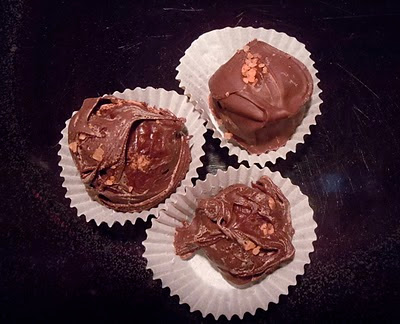How to describe the oddity that is hash? It's not really a dish, per se, more of a conglomeration of various products. Most hash resembles something that you'd find on a standard American breakfast plate: potatoes, meat, and usually an egg or two. Onions are usually added to give the whole thing some flavor, but honestly, it's among the more basic items on any menu. My father even swears that at one point (and I have no proof of this except his word) they sold it out of a can. Now I'm not sure how that would be possible (although science usually has a way of finding ways round these kind of obstacles), but there you go. So basic, you can find it in a can.
Like the humble pie, hash apparently is experiencing a resurgence in popularity in restaurants across the US. Instead of your basic potatoes, bacon, and eggs, you can now find all sorts of upscale variations of this dish, depending on your taste. In the Mission District in San Francisco, I was able to try some tongue and potato hash which, I have to confess, was absolutely delicious. Thank you, Hog and Rocks. And yes, their specialties were pig and oysters. Anyone surprised?
Regardless, hash is easy enough for anyone to cook but allows for endless variations. This particular recipe (as usual, found in the New York Times) originally called for just bacon, but in my mind, corned beef should never be turned down as a possible meat alternative. And, thanks to the wonders of science yet again, they now have corned beef available pre-cooked. Just heat and serve! This was clearly a win. The sweet potatoes were also a great substitution. I used white sweet potatoes to add just a bit more starchiness rather than yam-iness (?) to the dish. And it was a good decision.
No matter how you eat your hash or serve this recipe, do NOT neglect the onions. Yes, they take a bit of time. But mostly they're sitting in a pot, soaking in their own juices. And with a stick of butter melting into them, they are deliciously bad for you. Try to say no to them. Just try.
Now the bizarre white thing in the photo above is a poached egg. I know. It doesn't look right. I used one of those new-fangled "egg poaching cups" that swears it will make egg poaching the easiest thing ever. Well, it IS easier, but it doesn't make it any prettier. Your eggs come out looking rather like baked polenta. Well, at least according to my mother. But still soft and runny and delicious, so I still have to advocate the poacher if the old-school method is a bit daunting (as it is for me).
Ingredients
8 cups sliced onions (3 large ones)
Kosher salt
1 bay leaf
4 sprigs thyme
10 black peppercorns
1 garlic clove, smashed and peeled
1 stick unsalted butter, in 8 pieces
12 ounces corned beef
3 ounces best-quality bacon, sliced about 1/2-inch thick
3 pounds sweet potatoes, peeled, cooked (boiled, roasted or microwaved) and diced
1 tablespoon minced chives
Poached or sunny-side-up eggs, for serving (optional).
Method
Put onions in a large skillet, place over medium-low heat, and sprinkle with 1/4 teaspoon salt. Cook, uncovered, reducing the heat to maintain a low simmer, about 20 minutes, until onions are soft and swimming in liquid.
Tie the bay leaf, 3 sprigs thyme, peppercorns and garlic in a piece of cheesecloth (I just added them to the pot. Forget the cheesecloth). Add to onions along with butter, stir and cover (not too tightly, some steam should be allowed to escape). Cook slowly 30 to 35 minutes, until onions are meltingly tender and coated in butter. The mixture should look creamy at all times: if butter separates or if pan looks dry, stir in cold water 1 teaspoon at a time. Season to taste with salt. (Onions can be made up to 3 days in advance and refrigerated.)
Cut bacon crosswise into thick matchsticks. Pour 2 tablespoons water into a medium saucepan and set over medium heat. Add bacon, reduce heat to low, and cook for 30 minutes. Bacon will render its fat and become golden, but not completely crisp. Using a slotted spoon, transfer bacon to paper towels. Pour off excess fat from pan, leaving a thick film on bottom to cook hash; reserve the extra fat. Add the corned beef to the pan to warm it (you don't need to heat it for long).
Heat oven to 200 degrees. Spread half of potatoes in pan, sprinkle with salt and add half the leaves of the remaining sprig of thyme. Cook undisturbed, over medium-low heat, until crisp, about 5 minutes. Add 1/2 cup melted onions and a quarter of the bacon and the corned beef, and gently fold together until heated through. Transfer to an ovenproof serving bowl and keep warm. Repeat with remaining potatoes, a quarter of the bacon and corned beef, another 1/2 cup onions (refrigerate leftover onions; they make a great sauce for fish) and remaining thyme leaves. Sprinkle hash with chives (if using) and remaining bacon and corned beef. Serve hot, topped with eggs if desired.
Yield: 6 to 8 servings.






